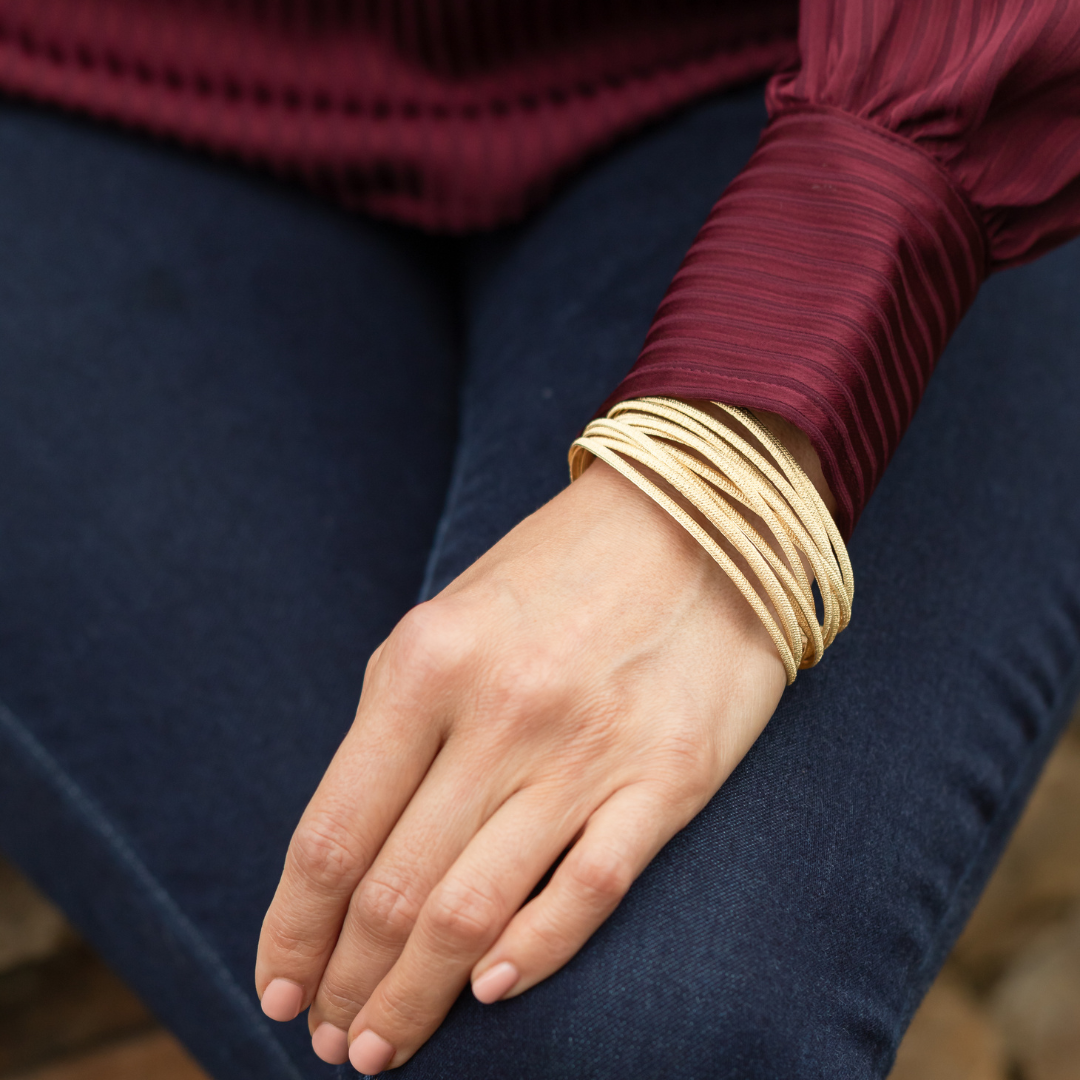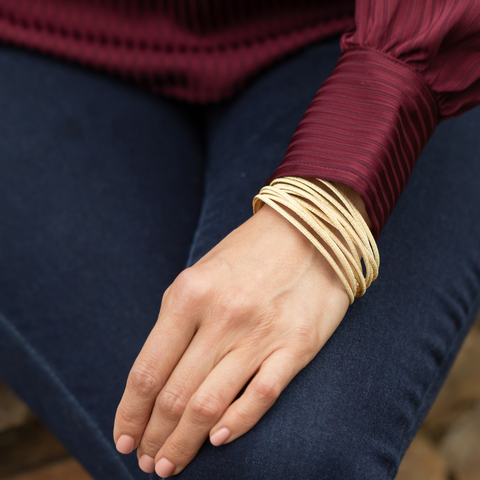
Gold was first mined regularly in the Nubian region of Egypt along the Nile nearly 4,500 years ago. But gold’s use in artifacts reaches back nearly 7,000 years to what is now Bulgaria. Through the millennia, it has been coveted by royalty, offered to gods, and turned into valuable jewelry. Modern countries have large reserves of gold and represents great wealth.
For the average jewelry shopper, all the history and mystery of gold can be overwhelming. You know what you like, and you know what looks good to you. For many, that’s all the information you need. Gold is one of the more malleable metals and very resistant to corrosion. Because of that, it’s easy to hammer and mold into just about any kind of jewelry and it holds its beauty for centuries.
But not all gold is the same, especially with the wide-ranging jewelry options available. To help you make sense of it all, we off you a handy guide to better distinguish the good gold from the bad.

Here are some of the common terms you’ll hear when looking at gold:
Karat
Karat (spelled with a “K”) tells you the purity of the gold. The higher the number, the purer the gold.
- 24 karat gold (24K) is pure gold. There are no other metals mixed in
- 18 karat gold (18K) is 75% pure gold, with 25% other alloys
- 14 karat (14K) is made with 58.3% pure gold, and the remaining 41.7% is other alloys
- 10 karat (10K) gold is the least pure gold you can find that can still be considered “gold jewelry”
You don’t need to memorize all that math, just know that since some people are allergic to certain metals (such as zinc), when you purchase something under 24K, you are introducing other metals to the product. If it’s not 100% pure gold, be sure to ask what other elements were used.
Alloy
An alloy is a metal that is made by combining more than two metal elements. For example, Rose Gold is a combination of gold, copper, and silver. It’s often done to help the piece resist corrosion or alter the color.
Ductile/Ductility
This refers to how much a metal can be changed or deformed before it loses its strength. Gold and nickel are two of the more ductile metals and can be stretched very thin before losing its inherent strength.
Gold Purity
This is the measurement of the purity of gold (see karat).
Hallmark
This is a small imprint stamped into gold jewelry, indicating the karat of the gold used. Engagement rings, for example, will have 10K, 14K, or 18K stamped into the inner edge.
Karat
Karats are the measurement of the purity of gold, traditionally shown as 10, 14, 18, or 24K.
Malleability
This is the ability of a metal to be formed, shaped, or forged into new shapes. Gold, being one of the more malleable metals, is ideal in many jewelry applications.
Millesimal Fineness
This is the accepted system of measuring and noting the purity of platinum, gold, and silver alloys. The measurement is made in parts per thousand of pure metal in the alloy.
Karat and Millesimal Fineness are both used to measure the purity of the gold, with “karat” being the more common method.
Below is a chart showing the Millesimal Fineness system showing the equivalents in karats and the purity of the gold.
|
Number of Karats |
Fraction of Gold |
% of Gold Purity |
Millesimal fineness |
|
10K |
10/24 |
41.7 |
416/417 |
|
12K |
12/24 |
50.0 |
500 |
|
14K |
14/24 |
58.3 |
583/585 |
|
18K |
18/24 |
75.0 |
750 |
|
22K |
22/24 |
91.7 |
916/917 |
|
24K |
24/24 |
99.9 |
999 |
Does a higher karat mean higher quality?
Not necessarily. The highest karat of gold is 24-karats. That’s considered 100% pure gold and has no impurities. Pure gold, however, is very soft and sometimes less than ideal for use in jewelry. 18K gold is most used in rings because it’s both beautiful and durable.
How can I tell if I have real gold?
The best way to be sure is to bring it to a qualified jeweler. You can also look for the hallmark, or stamp, indicating the karats. If you’re at all suspicious of something, drop it into a glass of water. Gold will sink to the bottom, while imitations tend to float.
How many karats is right for me?
This question is best answered by knowing what kind of jewelry it is, and how it will be used. Rings, for example, should be at least 18k gold. Since we are using our hands so much during the day, it’s easy for rings to get dented or scuffed. 18K gold, because it contains 25% of other metals, tends to be stronger. If you like gold to have differing colors (like yellow gold or pink gold) it will also be combined with other metals.
Did you misspell “karat?” I thought it was “carat.”
Karat, carat, and carrot are 3 different things. Karat is the way jewelers measure purity in gold. Carat is a measurement of the weight or size of a gemstones like diamonds. And a carrot, of course, is what bunnies eat.
You don’t need to be an expert in all these nuances, but it’s good to have a basic understanding of the terms and numbers you’ll see when jewelry shopping. As always, if you ever have any questions or would like one of our expert jewelers to give you a professional opinion, please stop in to any of our stores any time!


